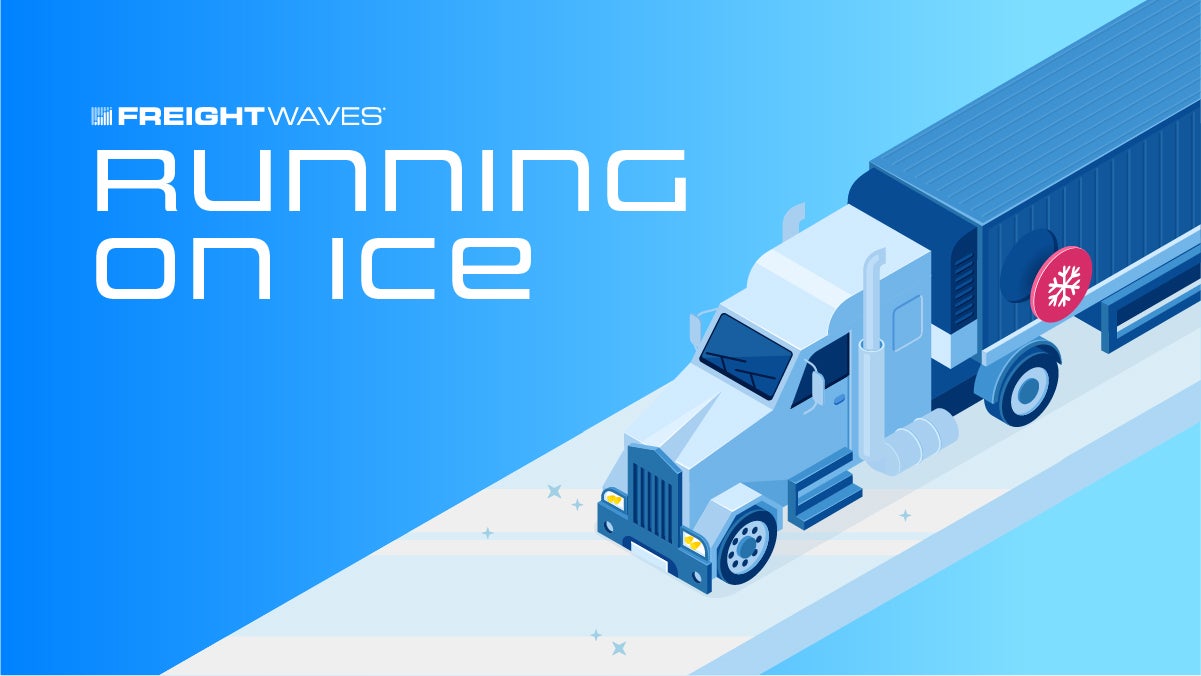Hello, and welcome to the coolest community in freight! Here you’ll find the latest information on warehouse news, tech developments and all things reefer madness-related. I’m your controller of the thermostat, Mary O’Connell. Thanks for having me!
All thawed out
(Photo: Jim Allen/FreightWaves)
Tiger Cool Express seemingly closed up shop overnight, with employees and customers alike wondering what was happening. The company officially closed June 13 and since then some additional details surrounding the abrupt closure have emerged.
It seems that Tiger Cool Express was the most recent carrier to succumb to the tight freight market. After refinancing its equipment a few years ago, the 700 temperature-controlled containers in its fleet had a hefty price tag and the dramatic drop in outbound tender volumes ultimately led to its demise as the company struggled to make its loan payment.
It goes without saying that the development of the Tiger Tri-Cities Logistics center in Wallula, Washington, is no longer an ongoing project.
Temperature checks
(Photo: Jim Allen/FreightWaves)
In the nonstop trek toward net-zero carbon emissions, carriers are working toward more than just electrifying trucks. Depending on the situation, it could be easier to electrify reefer units before a long-lasting electric truck. California obviously is leading the charge in decarbonization and electrification but shippers and carriers outside the state are jumping on board as well.
A Fleet Equipment magazine article states, “The transition to electric refrigeration units will also require operational changes. Maintaining temperature control is always critical, but keeping rear doors open for extended periods during loading or unloading won’t work in an electric refrigeration unit application given the demands on the batteries, whether they’re powering the truck or independently powering the eTRU. Safety considerations also need to be taken into account due to the high-voltage nature of these systems. That will require appropriate training, personal protective equipment (PPE) and adherence to electrification readiness standards.”
Food and drugs
(Photo: Jim Allen/FreightWaves)
Relief may be coming to the drive-thru. Fast food and quick service establishments have made up the most successful restaurant category since the pandemic hit and despite high levels of inflation, consumers have still been able to access convenient foods at prices that aren’t breaking the bank. As sit-down and high-end restaurants saw consumers make more cost-conscious swaps, fast food saw no end in sight to its popularity.
While inflation was driving up the cost of goods, it also drove up labor costs. According to a Foodmarket article, “The median wage for fast-food and counter workers has risen by nearly 23% in four years. Keeping restaurants supplied has been expensive due to supply-chain snarls.” Now that inflation has gotten under control, for the most part, it’s easier to staff these quick service restaurants.
While there might be some relief at the register in terms of food prices, there is one thing that is for sure. There will not be an end to the quest for the best chicken sandwich. Chicken breast prices have dropped 59% since last year and that makes for an easy swap while everyone and their brother is on the hunt for a chicken sandwich or chicken nuggets. (I’m looking at you, KFC.)
Cold chain lanes
(SONAR Tickers: ROTVI.CAE, ROTRI.CAE)
This week’s reefer market is Columbia, South Carolina. Outbound tender volumes are down 57% week over week. Volume demand in the market has been cut in half, meaning the spike was the result of some strong seasonal demand but that freight has left the market and likely will not return. The upside is that outbound tender rejections have dropped below 13%, which is still more than double the national average for outbound tender rejections, currently sitting at 5.33%. Typically rejection rates that are above 7-10% indicate that spot rates are inflated. With Columbia coming in at 12.9%, expect spot rates to be significantly higher than the national average.
Is SONAR for you? Check it out with a demo!
Shelf life
Why demand is rising for secure and climate-controlled gene therapy services
American Consumers Can Now Eat Cell-Cultivated Chicken Following Historic USDA Approval
Wanna chat in the cooler? Shoot me an email with comments, questions or story ideas at moconnell@freightwaves.com.
See you on the internet.
Mary
If this newsletter was forwarded to you, you must be pretty chill. Join the coolest community in freight and subscribe for more at freightwaves.com/subscribe.









